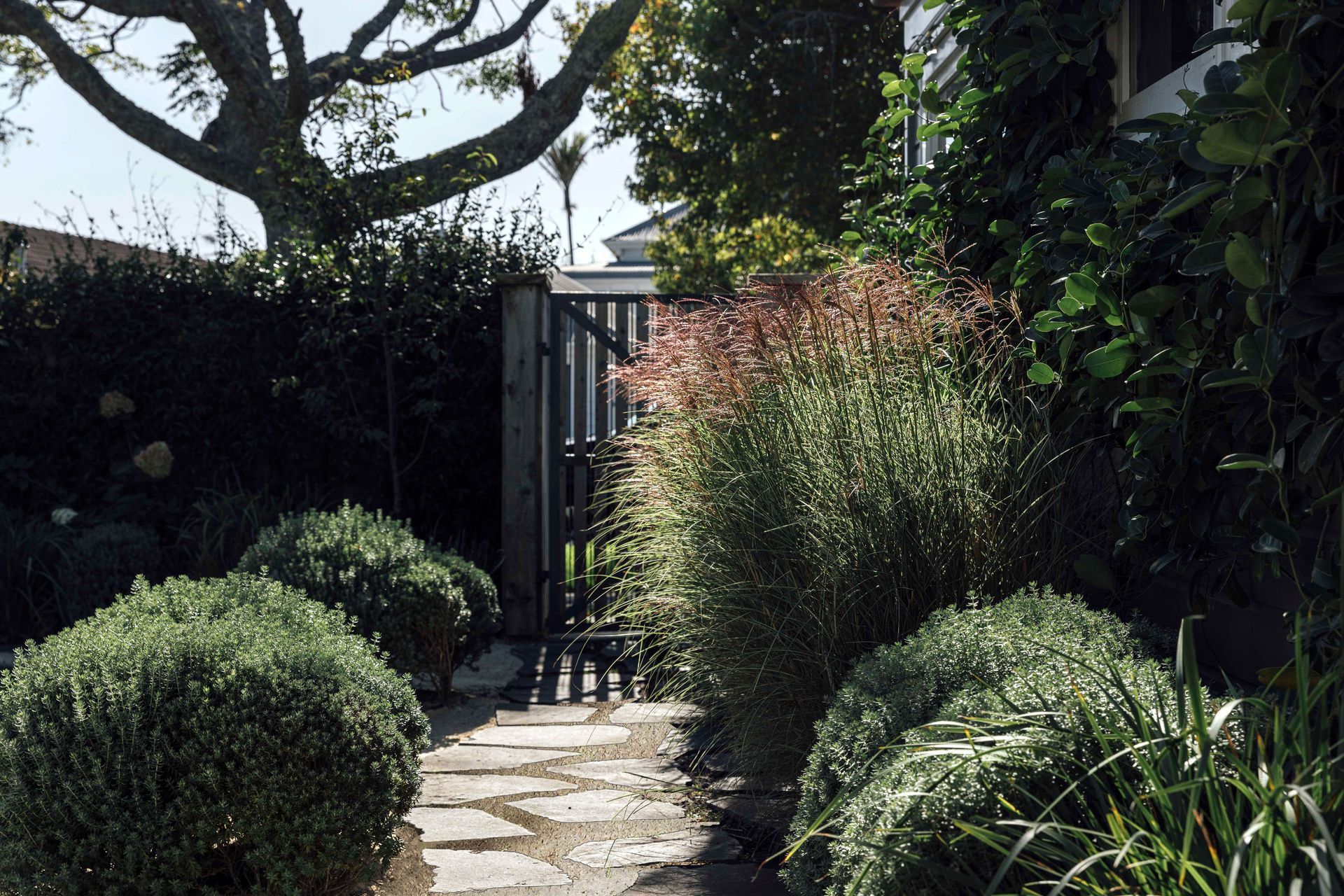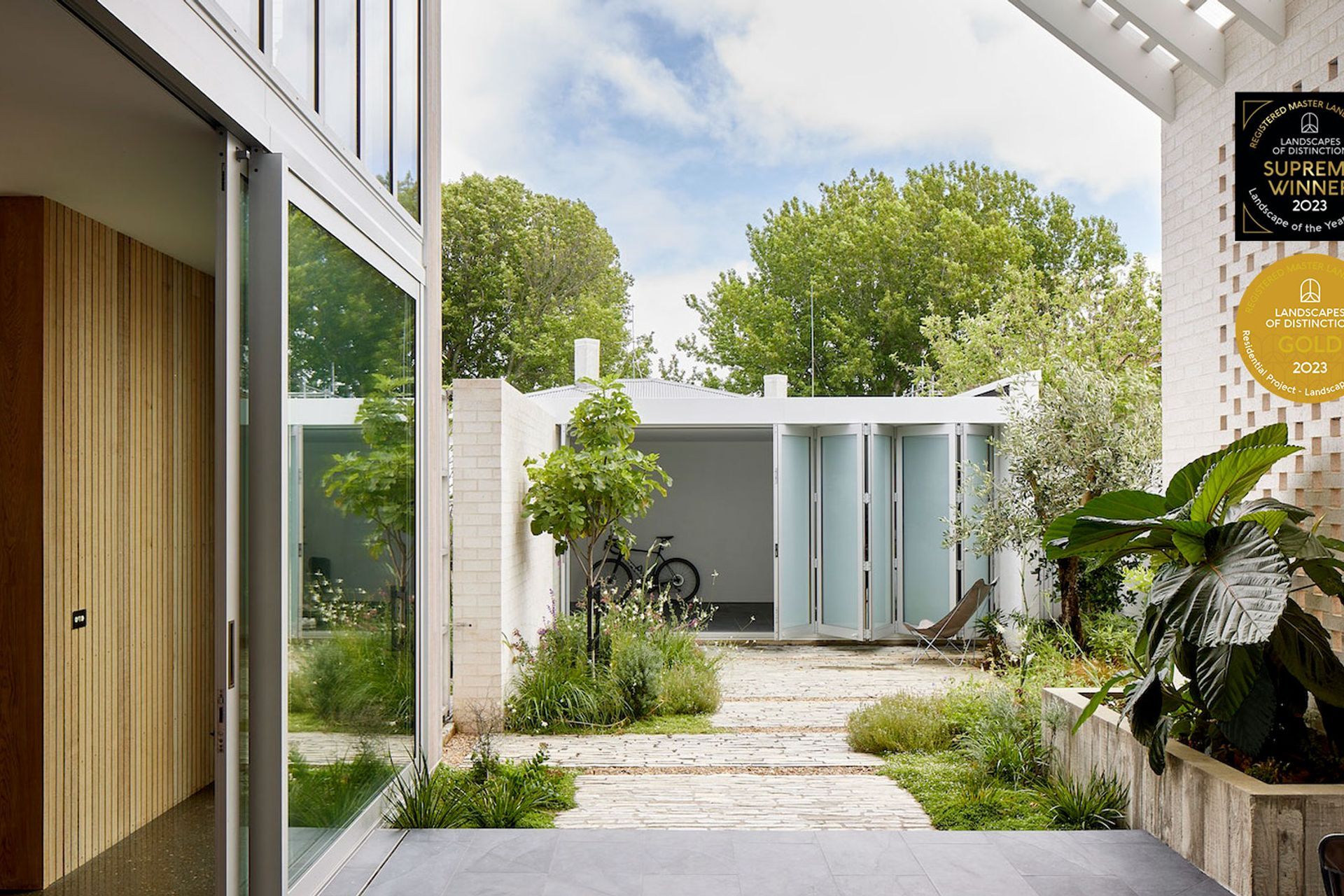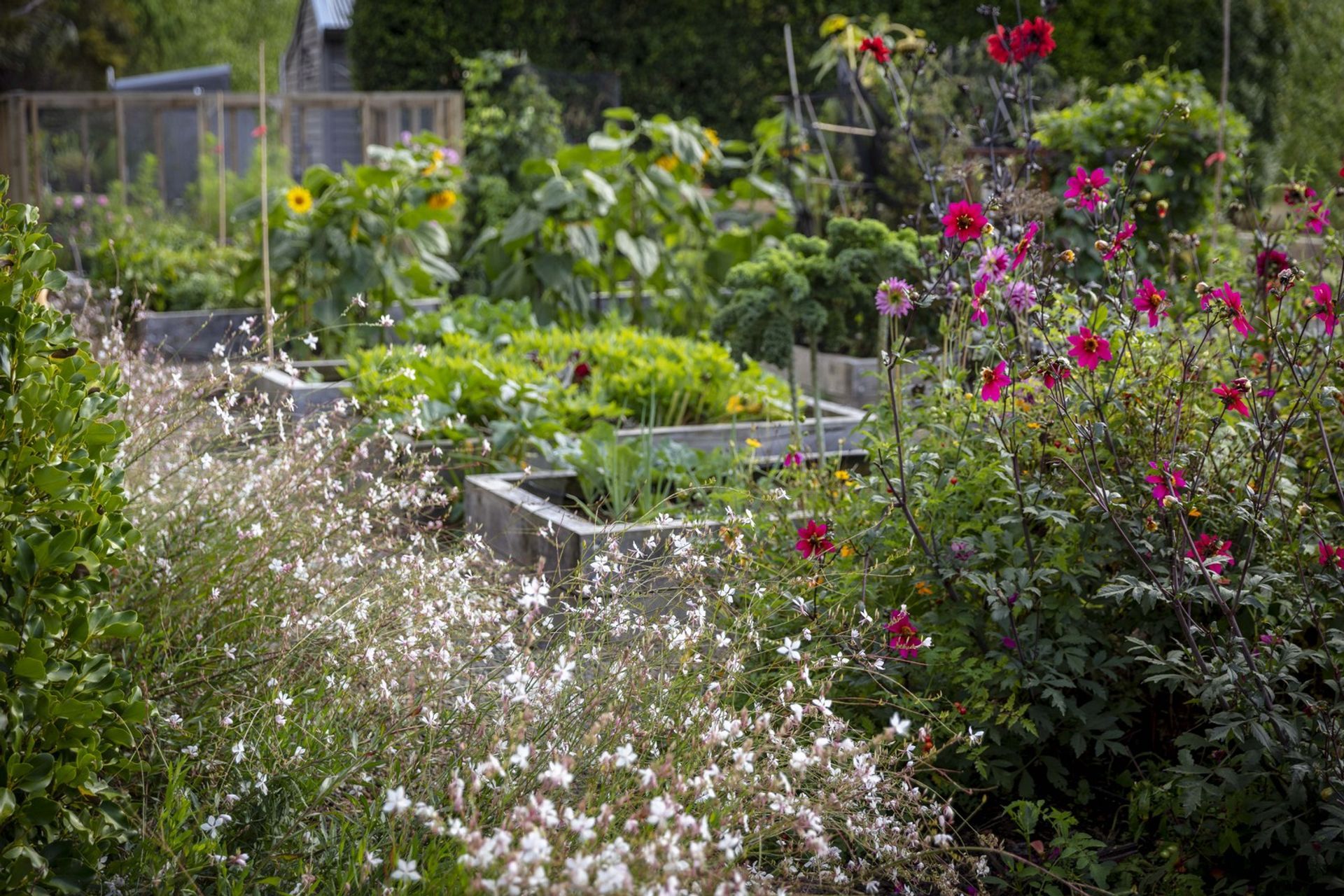How landscaping experts design gardens that encourage biodiversity and thrive in changing climate conditions
Written by
12 November 2023
•
6 min read

Conserving and restoring natural spaces is essential for limiting carbon emissions and adapting to the changing climate. And, while much of the conversation around conservation is about forests, wetlands, and ocean habitats, we have the opportunity to restore the land at a small scale in our own private gardens through climate-conscious landscaping. Not only can this protect your garden from flooding and drought damage, but encourages a diversity of wildlife and pollinators that benefit the ecosystem as a whole.
“Gardens are one of the primary locations where humans interact with nature, and they provide opportunities to create connections with the natural world. In the creation and longer term management of gardens, it is becoming increasingly important to understand the changing environmental factors and to create techniques to mitigate and adapt to these issues,” says Second Nature’s Chris Ballantyne.
As landscaping professionals passionate about environmental restoration, Second Nature are keenly aware of the impact climate change is having on our landscape, and how it will affect the dreams we have for our outdoor spaces. It’s for this reason that they understand the importance of designing gardens in response to changing climate conditions.
“In order to really protect your garden, it’s necessary to engage professionals who understand the challenges raised by the changing environment,” Ballantyne explains. “We have such a wealth of knowledge and experience within our team, as well as the skills of award-winning landscape architects like Andy Hamilton at our disposal, that we are able to create the best possible solution for every garden.”
Fresh off the back of Second Nature winning the Supreme Award at the Registered Master Landscapers Landscapes of Distinction awards we spoke with the garden’s designer, Andy Hamilton, to learn more about how he designs award-winning gardens that encourage biodiversity and thrive in the changing climate conditions.


Garden design principles for climate resilience and biodiversity
Biodiverse gardens are crucial to the health of our natural environment as a whole. As land development has significantly reduced the amount of green space in urban areas, it’s particularly important that biodiverse spaces are re-introduced through landscaping. “The more monocultural a garden is, the more sterile it is for organisms, with less habitat for creatures and critters that are essential to the effective functioning of the ecosystem,” Hamilton says.
“When you are designing with living things, plants in our case, consideration to how best they can thrive in the inherent soil conditions of the site is a key starting point.”
This means understanding how different soil types behave in periods of drought and flooding before planting to ensure each plant species will have the support it needs, regardless of weather conditions.
“In terms of layout, I try to maximise permeability to locally relieve saturation during heavy downpours, and apply a thick layer of mulch or horticultural grit to help reduce evaporation during periods of drought. The other main consideration is timing. Get your plants in the ground well before summer so the roots aren’t confined to a compact rootball, but spread wide and deep into the surrounding soil,” Hamilton explains.
Encouraging biodiversity comes down to designing species-rich planting schemes, Hamilton says. “I think of planting in three layers: tree canopy, shrub, and ground cover. It’s much more three dimensional than a simple planting plan would suggest. By creating layered gardens with a broad mix of species, the characteristics of light and shade are more varied, the seasonal dynamism is increased, and so is the opportunity for habitat.”
Of course, flowers are great for pollinators, but it’s important to think about habitats for invertebrates, too. This means decaying and rotting branches within the undergrowth, and soil diversity, which provides a thriving environment for the variety of fauna that live in different soils. “The more area you give over to softscape, specifically planting, the more habitat you provide in your property.”
Hardscaping materials are also a key consideration for Hamilton, who says gravel is a go-to for its permeability. “I like to use large slabs of local stone through gravel or ground covers to make paths. Anything that reduces the amount of concrete and tropical hardwoods is a win.”

Designing an award-winning urban garden rich in biodiversity
Hamilton’s and Second Nature’s recent awards shone a spotlight on the small urban courtyard. Starting out with a rather open brief, Hamilton says initial conversations were all about the atmosphere and quality of space that the client wanted to inhabit.
“The client was clear from the outset that they were interested in rich, varied planting with a natural impression. Edible planting and flowers to attract pollinators was also requested.” Hamilton set his focus on layered planting with carefully considered elements of hardscape necessary for access and sitting out in the garden.
When designing a visually exciting garden, as the award-winning courtyard is, Hamilton says he tends to let planting be the hero. With a simple layout not overwhelmed by too many built-in features, the softscape is able to take centre stage. The garden must also respond to the architecture of the house, taking its aesthetic cues from architectural details, which can be reflected in expertly crafted hard landscaping elements. To keep the garden visually appealing year-round, Hamilton carefully orchestrates a mix of plants that retain aspects of interest throughout the changing seasons — incorporating them in such a way that there are no noticeable ‘dead’ areas in the garden during autumn and winter.


A landscaper’s advice for protecting your garden during a drought
With the forecasted El Niño summer, Hamilton advises laying a thick bed of mulch throughout your garden, focusing on areas with the most sun exposure.
“A depth of 75 - 100mm of composted mulch or horticultural grit is ideal,” he says. “Avoid watering little and often, as this tends to only wet the surface layer most prone to daily evaporation, and you’ll end up with plants that have roots at the surface. Instead, irrigate less frequently but heavily to encourage deeper rooting plants and ensure a higher proportion of the water goes below the evaporation layer.
“It may seem counterintuitive, but heavy watering after rainfall is good, as the rain has already moistened the top layer so your irrigation can penetrate to the deeper roots.”
Learn more about Second Nature.